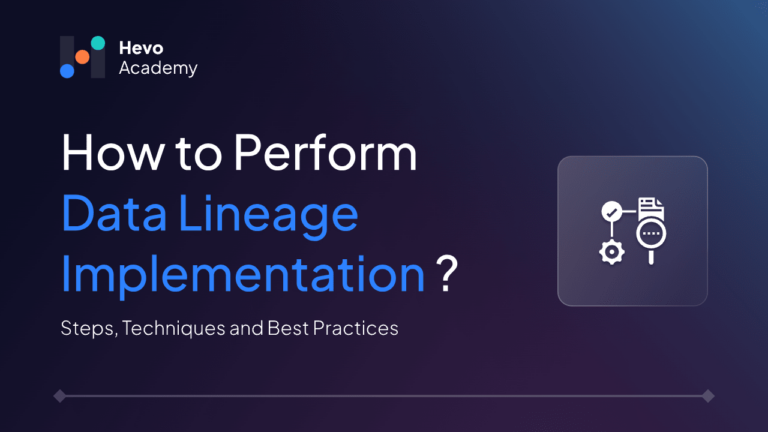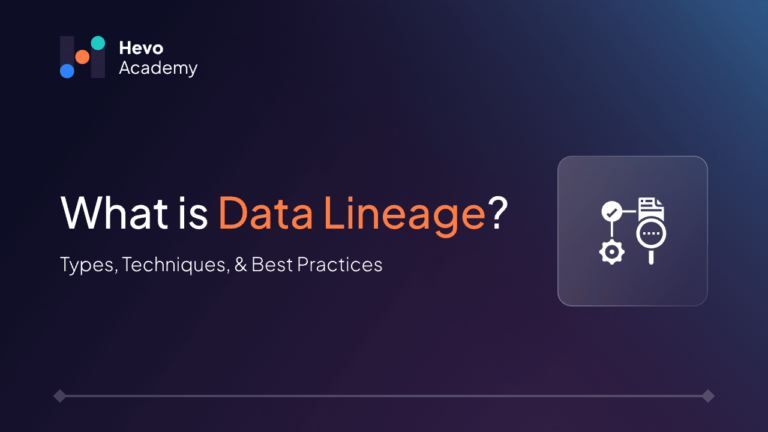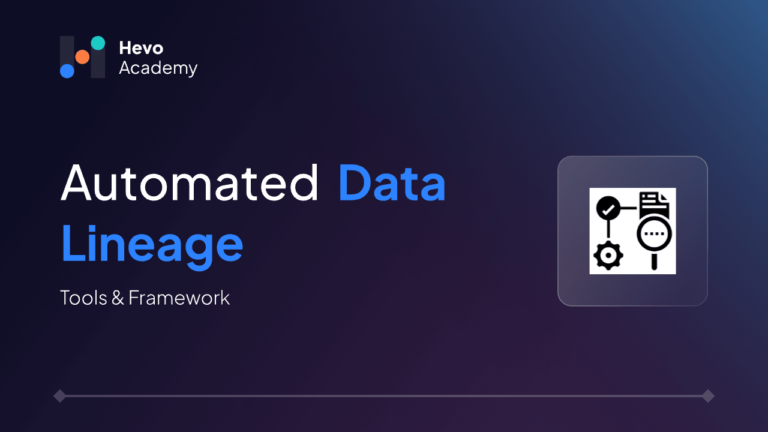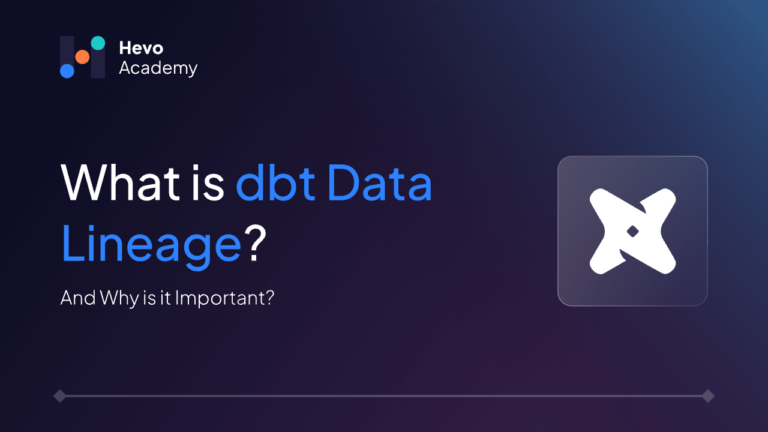Most Organizations have a constant flow of data from different sources. This data is then moved, transformed and combined to create a robust view of the organization’s operations and customer experiences.
Table of Contents
However, without a clear record of why, when, and how the data is been moved and transformed, organizations will find themselves unable to validate the accuracy of their data and proactively resolve issues that might arise as a result.
This is why data lineage implementation has become very important for organizations and businesses as they attempt to manage and understand their overall data ecosystem.
As we proceed in this blog post we shall discuss the concept of data lineage, its key features and techniques, the best practices to ensure its success and most importantly, why it is essential for organizations.
What Is Data Lineage?
Data lineage includes the understanding, recording, and visualizing of data as it moves from its sources to its final destination. This includes all the transformations the data went through along the way, how it was transformed, and why.
Data lineage helps organizations make sure that their data comes from a reliable source, has been transformed correctly, and is being loaded to a desired database. Data lineage plays an important role in organizations especially when strategic decisions rely on accurate insights derived from the data.
For instance, let’s consider a small-scale business that keeps customer sales records from its point of sale (POS) system. The data then moves to a preferred database, where it is cleaned and transformed for reporting purposes. With data lineage, the business owner can track all the steps and the changes the data underwent. This will ensure transparency and help the business owner understand how his data changes at every stage.
Facing challenges migrating your data? Migrating your data can become seamless with Hevo’s no-code intuitive platform. With Hevo, you can:
- Automate Data Extraction: Effortlessly pull data from 150+ sources including 60+ free sources).
- Transform Data effortlessly: Use Hevo’s drag-and-drop feature to transform data with just a few clicks.
- Seamless Data Loading: Quickly load your transformed data into your desired destinations.
Try Hevo and join a growing community of 2000+ data professionals who rely on us for seamless and efficient migrations.
Get Started with Hevo for FreeKey Features of Data Lineage:
- Data Source tracking: Tracks the source of the data and its flow into the system.
- Transformation Reporting: Record all transformations done to the data.
- Data Flow Tracking: Provides the tracking of data flow from the source to where it is being used.
- Better Data Governance: Maintain proper ownership and control of data resources.
- Data Regulatory Compliance: Supports data compliance, by demonstrating the way data is processed and processed.
Why is it Important to Implement Data Lineage?
Data lineage allows organizations to:
- Track errors in their data processing procedures.
- Carry out business process changes with less risk.
- Switch between systems with confidence.
- Enabling Data-Driven Decision-Making.
- Strengthening Data Governance and Management.
Data Lineage Techniques
Some of the data lineage techniques are listed below:
- Automated Data Lineage: This technique uses tools and applications that can automatically monitor how data is being moved between systems and databases. The applications use the metadata extracted to demonstrate data movements.
- Data Lineage Manually: Data lineage can be captured manually in small systems by recording the flow of data and transformations. This includes a comprehensive documentation but it may be time consuming and full of error.
- Auto-documenting ETL pipelines: A good number of data warehouses are now self-documenting the ETL (Extract, Transform, Load) pipelines to automatically capture data lineage. This is particularly handy when dealing with highly complex, multisystem systems.
- Lineage from Metadata: The Metadata is an important link in lineage tracking. The analysis of metadata can enable organizations to create visualizations that illustrate where data is coming from, how it’s changing, and where it is going.
Quick Tip: Understanding data lineage vs data provenance is critical in implementation, as lineage tracks data flow, while provenance focuses on data origins and transformations.
Steps for Data Lineage Implementation
How to Set Up a Data Lineage System
- Assessment of Data Sources: Define and evaluate which systems and applications your data is stored and processed.
- Tools to Select: Select the tools and systems to be used for automatic or semi-automatic data lineage tracking, i.e. Talend, Collibra, Informatica.
- Metadata Capture: Target metadata harvesting from your data infrastructure, such as data models, ETL pipelines and APIs. Metadata will comprise your data tree model.
- Map Data Flow: After gathering metadata, visualize the whole flow of data from beginning to end and every transformation and movement between.
- Configure Alerts: Create data tracking and alerts so you are alerted to changes or irregularities in data flows.
- Integrate with Data Governance: Make sure your data heritage is part of a larger data governance picture that covers data stewardship, policies, and compliance policies.
- Test and Validate: In the end, validate your data lineage system with test data flow to verify that it accurately represents real-world data transformations.
Best Practices for Implementing Data Lineage
- Get Big: Build small datasets at the beginning, then scale up over time. This will make sure that data lineage is deployed properly without clogging your systems.
- Automate as Often as Possible: Automate and add lineage into data in real-time to eliminate error and maximize productivity.
- Work Across Teams: Don’t just focus on one team, but have data engineers, analysts, and compliance officers.
- A robust data governance strategy complements data lineage by establishing policies for data access, quality, and compliance, making lineage tracking more effective.
- Periodic Audits: Regularly audit your data lineage to make sure you keep track of what is going on with changes in regulations.
- Prioritize Metadata: invest in metadata management software for data lineage visualization and reporting.
Along with these best practices, it is essential to have a good data lineage tool. To know which tool suits your business needs, check out our blog on 10 Best Data Lineage Tools in 2024.
Conclusion
Data lineage is an essential process for any organization that seeks to efficiently manage its data, make sure it complies with industry standards, and eventually improve the quality of data. Through the flow and integration of data, organizations will be able to better understand their operations, make better decisions and retain high confidence in their data. Data lineage might sound tough, but by using the right tools, techniques and best practices, organizations can achieve an efficient and secure system that’s valuable on all fronts.
Frequently Asked Questions
1. How is data lineage implemented?
Data lineage can be applied by automating data flow capture tools and documentation of data operations in real-time or by working manually with data process documentation.
2. What is the best way to represent data lineage?
Data lineage is best expressed through visual diagrams and aids. The diagrams will clearly explain how data has been moved and transformed between systems.
3. What are the steps for documenting data lineage?
Recording data lineage means tracing data sources, mapping the data flow, collecting metadata, and visualising the data flow.
4. How to do data lineage manually?
This involves manually documenting all the steps involved in the movement and transformation of the organization’s data. This process requires a very deep knowledge of the data process and systems involved.






